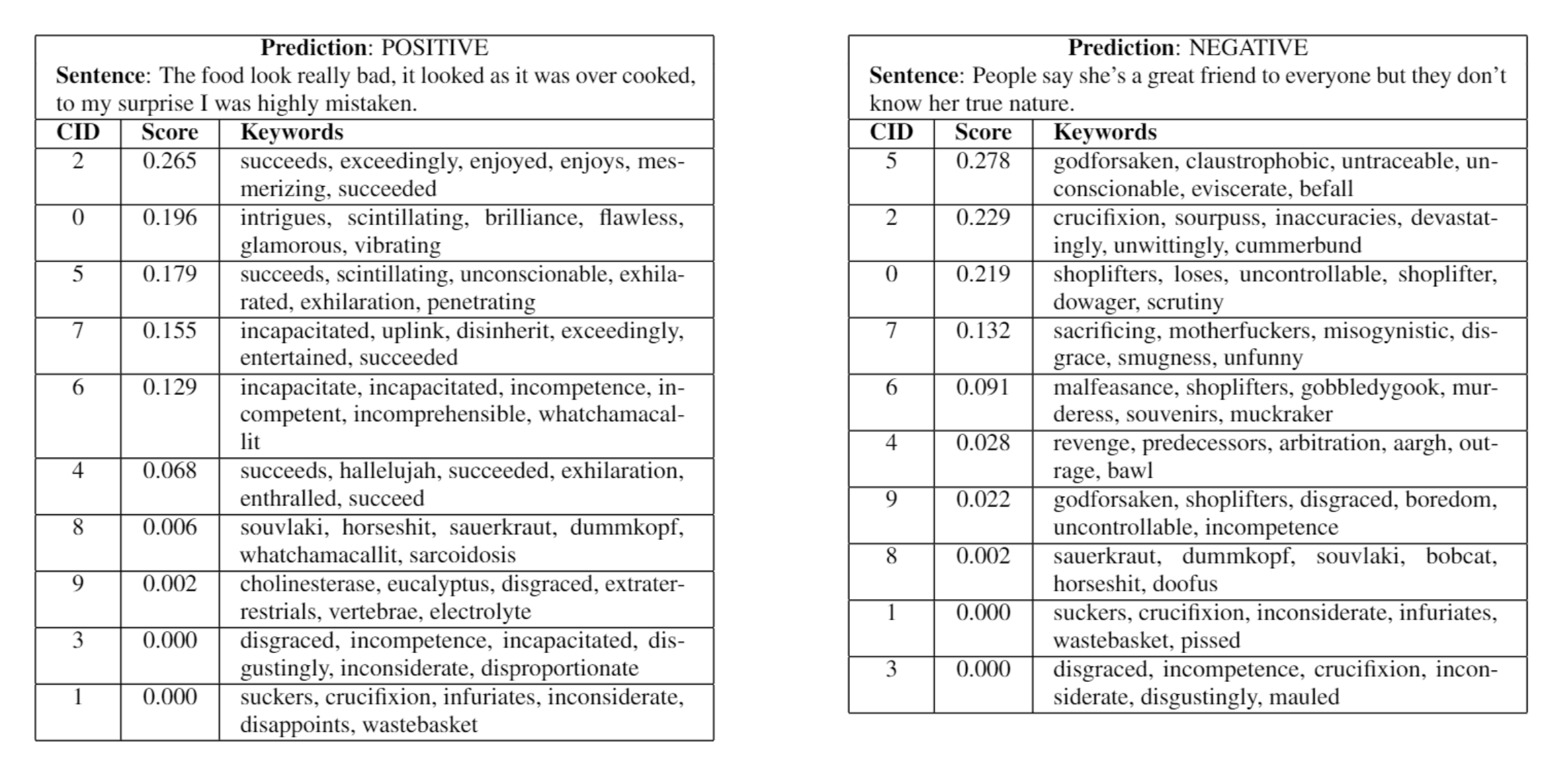Learning Unsupervised Concept-Based Explanations for Sentiment Analysis.
This work aims to address the problem of concept-based explainability in natural language understanding tasks. Concept-based interpretability methods are important to helping users understand model predictions in human-level intuitive concepts. While prior works in concept-based explainabilty have largely focused on the vision domain, we explore challenges in adapting such methods to natural langauge by building from recent works (Shi et al., 2020) in this area and applying concept-based explainability methods to a sentiment classification task. We compare the concept-based interpretable methods to black-box model predictions and find that performance on the task is comparable, however the coherency of discovered concepts in the interpretable model suffers from lack of coherency.
See the full paper report here for an in-depth evaluation and analysis of this approach. This was my final project for Stanford's CS 224U: Natural Language Understanding class.
Figure: Two example concept-based explanations with mixed results. See the full paper report for more.
- It's recommended you use Anaconda for many dependencies. If you don't want to use Anaconda, see the commented out requirements in requirements.txt.
- Run
pip install -r requirements.txtto install extra dependencies. - Also install PyTorch.
Download dynasent_model1.bin from https://drive.google.com/drive/folders/1dpKrjNJfAILUQcJPAFc5YOXUT51VEjKQ and put it in the models folder in this directory.
Run train_and_save_models.ipynb to train 4 models (RoBERTa-Base, DynaSent Model 1, and a version of each made into an Attention-Abstraction Network) on the training data (DynaSent Round 2). This will fine-tune these models for sentiment analysis and save the resulting experiment dicts (which contain the best trained model in the 'model' value) to a local models folder.
Run evaluate_trained_models.ipynb to evaluate the trained models. This will plot their training and compare their performance on the held-out DynaSent test set as well as demonstrating some concept-based explanations for certain test examples.
- https://arxiv.org/abs/2004.13003 for proposing the abstraction-aggregation network architecture.
- https://github.com/tshi04/ACCE for the abstraction-aggregation attention layer and loss function code
- https://github.com/cgpotts/cs224u for some framework files, including
- https://github.com/cgpotts/dynasent for DynaSent models and data
- https://github.com/dolph/dictionary for a list of 25k English words used as concept keywords
